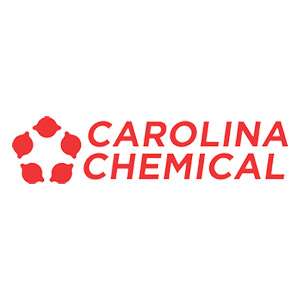100g
Showing 1901–1950 of 2169 results
-

Sulfabenzamide
$431.03 Add to cart View Product DetailsSulfabenzamide
-

Sulfaguanidine
$103.47 Add to cart View Product DetailsSulfaguanidine
-

Sulfamide
$1,206.87 Add to cart View Product DetailsSulfamide
-

Sulfanilamide
$92.17 Add to cart View Product DetailsSulfanilamide
-

Sulfanilamide
$61.84 Add to cart View Product DetailsSulfanilamide
-

Sulfanitran
$420.42 Add to cart View Product DetailsSulfanitran
-

Sulfaquinoxaline Sodium Salt
$371.35 Add to cart View Product DetailsSulfaquinoxaline Sodium Salt
-

Sulfasalazine, USP
$842.11 Add to cart View Product DetailsSulfasalazine, USP
-

Sulfobromophthalein Sodium Salt, Hydrate
$5,371.21 Add to cart View Product DetailsSulfobromophthalein Sodium Salt, Hydrate
-

Sulindac, USP
$1,165.96 Add to cart View Product DetailsSulindac, USP
-

Tadalafil Powder – 100G
$128.80 Add to cart View Product DetailsCAS Number 171596-29-5 Molecular Weight 389.40Molecular Formula C22H19N3O4 -

Tamoxifen Citrate, USP
$3,138.48 Add to cart View Product DetailsTamoxifen Citrate, USP
-

TAPS, Biological Buffer
$155.23 Add to cart View Product DetailsTAPS, Biological Buffer
-

TAPSO, Biological Buffer
$120.04 Add to cart View Product DetailsTAPSO, Biological Buffer
-

Tartrazine
$209.32 Add to cart View Product DetailsTartrazine
-

Taurine
$61.27 Add to cart View Product DetailsTaurine
-

Taurine, Reagent
$41.52 Add to cart View Product DetailsTaurine, Reagent
-

Tellurium Dioxide
$408.45 Add to cart View Product DetailsTellurium Dioxide
-

Terbutaline Sulfate, USP
$1,536.30 Add to cart View Product DetailsTerbutaline Sulfate, USP
-

Terephthalaldehyde
$108.51 Add to cart View Product DetailsTerephthalaldehyde
-

Terephthalic Dihydrazide
$277.17 Add to cart View Product DetailsTerephthalic Dihydrazide
-

Terephthalonitrile
$347.45 Add to cart View Product DetailsTerephthalonitrile
-

Terephthaloyl Chloride
$29.03 Add to cart View Product DetailsTerephthaloyl Chloride
-

tert-Butyl 2-Bromopropionate
$588.85 Add to cart View Product Detailstert-Butyl 2-Bromopropionate
-

tert-Butyl Hydroperoxide, (70 Percent in Water)
$37.82 Add to cart View Product Detailstert-Butyl Hydroperoxide, (70 Percent in Water)
-

tert-Butyl Propionate
$348.22 Add to cart View Product Detailstert-Butyl Propionate
-
![tert-Butyldimethylchlorosilane, [tert-Butyldimethylsilylating Agent]](https://advatechgroup.com/wp-content/plugins/woocommerce/assets/images/xplaceholder.webp.pagespeed.ic.ANHCL-f_RA.webp)
tert-Butyldimethylchlorosilane, [tert-Butyldimethylsilylating Agent]
$177.92 Add to cart View Product Detailstert-Butyldimethylchlorosilane, [tert-Butyldimethylsilylating Agent]
-

tert-Butyldimethylsilyl Chloride
$375.31 Add to cart View Product Detailstert-Butyldimethylsilyl Chloride
-

tert-Butylhydrazine Hydrochloride
$73.17 Add to cart View Product Detailstert-Butylhydrazine Hydrochloride
-

TES, Biological Buffer
$442.96 Add to cart View Product DetailsTES, Biological Buffer
-

Testosterone (CIII), Micronized, USP
$1,710.90 Add to cart View Product DetailsTestosterone (CIII), Micronized, USP
-

Testosterone (CIII), Micronized, USP
$1,622.94 Add to cart View Product DetailsTestosterone (CIII), Micronized, USP
-

Testosterone Propionate (CIII), Micronized, USP
$5,324.68 Add to cart View Product DetailsTestosterone Propionate (CIII), Micronized, USP
-

Testosterone, (Non Micronized) (CIII), USP
$524.80 Add to cart View Product DetailsTestosterone, (Non Micronized) (CIII), USP
-

Tetrabutyl Orthotitanate
$90.86 Add to cart View Product DetailsTetrabutyl Orthotitanate
-

Tetrabutylammonium Acetate
$251.09 Add to cart View Product DetailsTetrabutylammonium Acetate
-

Tetrabutylammonium Bromide
$42.90 Add to cart View Product DetailsTetrabutylammonium Bromide
-

Tetrabutylammonium Bromide
$98.14 Add to cart View Product DetailsTetrabutylammonium Bromide
-
![Tetrabutylammonium Bromide, [Reagent for Ion-Pair Chromatography]](https://advatechgroup.com/wp-content/plugins/woocommerce/assets/images/xplaceholder.webp.pagespeed.ic.ANHCL-f_RA.webp)
Tetrabutylammonium Bromide, [Reagent for Ion-Pair Chromatography]
$82.02 Add to cart View Product DetailsTetrabutylammonium Bromide, [Reagent for Ion-Pair Chromatography]
-

Tetrabutylammonium Chloride
$441.68 Add to cart View Product DetailsTetrabutylammonium Chloride
-

Tetrabutylammonium Chloride
$374.72 Add to cart View Product DetailsTetrabutylammonium Chloride
-

Tetrabutylammonium Chloride, Hydrate
$397.89 Add to cart View Product DetailsTetrabutylammonium Chloride, Hydrate
-

Tetrabutylammonium Fluoride, Hydrate
$615.39 Add to cart View Product DetailsTetrabutylammonium Fluoride, Hydrate
-
![Tetrabutylammonium Fluoride, Hydrate [for Catalyst of acylation, silylation and cleavage of silyl ether]](https://advatechgroup.com/wp-content/plugins/woocommerce/assets/images/xplaceholder.webp.pagespeed.ic.ANHCL-f_RA.webp)
Tetrabutylammonium Fluoride, Hydrate [for Catalyst of acylation, silylation and cleavage of silyl ether]
$503.42 Add to cart View Product DetailsTetrabutylammonium Fluoride, Hydrate [for Catalyst of acylation, silylation and cleavage of silyl ether]
-

Tetrabutylammonium Hydrogen Sulfate
$51.75 Add to cart View Product DetailsTetrabutylammonium Hydrogen Sulfate
-

Tetrabutylammonium Hydrogen Sulfate
$567.49 Add to cart View Product DetailsTetrabutylammonium Hydrogen Sulfate
-
![Tetrabutylammonium Hydrogen Sulfate, [Reagent for Ion-Pair Chromatography]](https://advatechgroup.com/wp-content/plugins/woocommerce/assets/images/xplaceholder.webp.pagespeed.ic.ANHCL-f_RA.webp)
Tetrabutylammonium Hydrogen Sulfate, [Reagent for Ion-Pair Chromatography]
$282.60 Add to cart View Product DetailsTetrabutylammonium Hydrogen Sulfate, [Reagent for Ion-Pair Chromatography]
-

Tetrabutylammonium Hydroxide, (40 Percent in Water)
$104.74 Add to cart View Product DetailsTetrabutylammonium Hydroxide, (40 Percent in Water)
-

Tetrabutylammonium Iodide
$116.07 Add to cart View Product DetailsTetrabutylammonium Iodide
-

Tetrabutylammonium Iodide
$126.68 Add to cart View Product DetailsTetrabutylammonium Iodide






